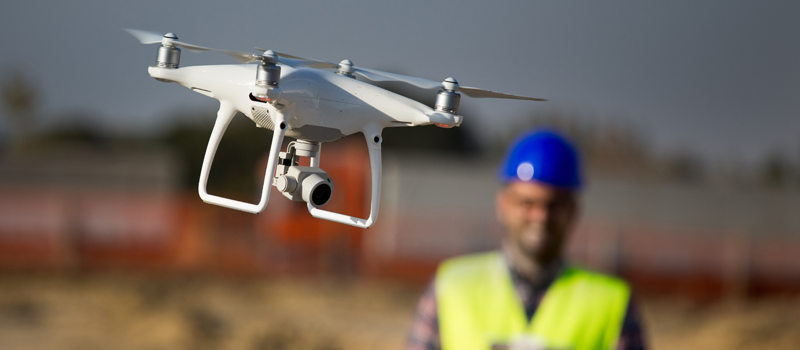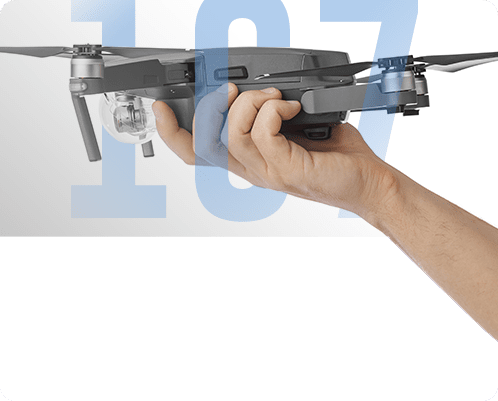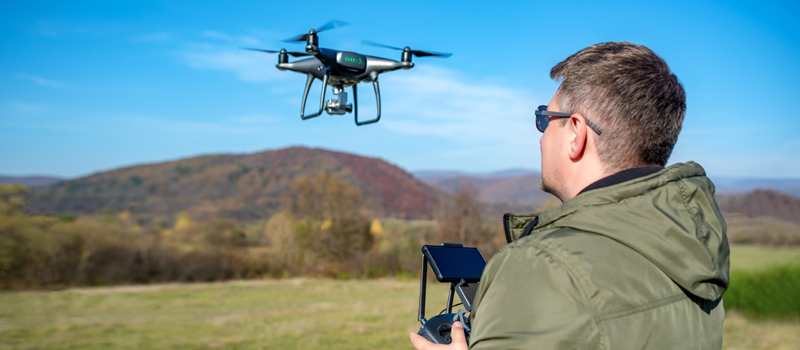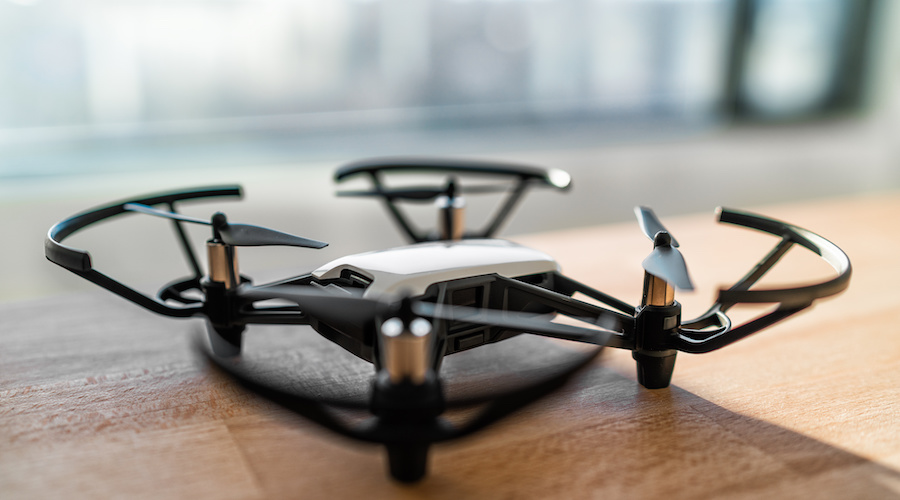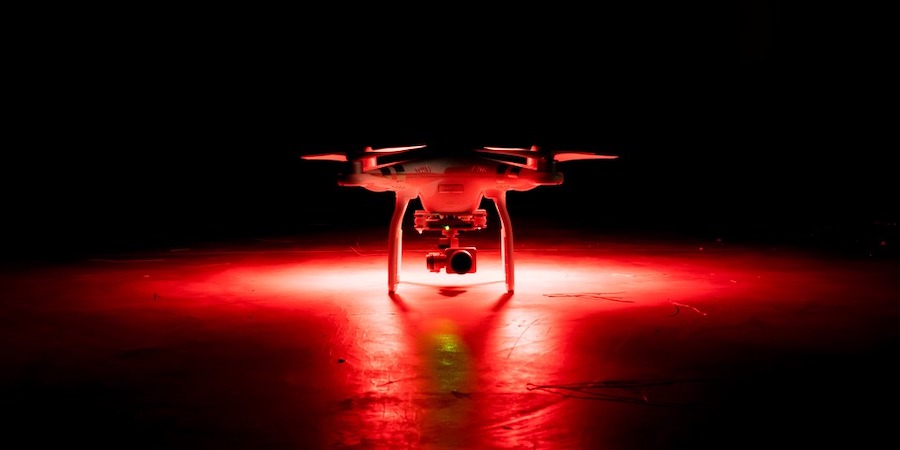Maintaining visual line of sight is one of the primary safety principles of drone flight. It ensures drones remain within a reasonable distance from the remote pilot in command (RPIC) and that all potential hazards near the drone are within visibility.
Although recognized as a safe practice, flying within BVLOS also severely limits drone operations. There is a lot of potential for drone technology that cannot be realized until it is technologically and legally possible to fly a drone beyond visual line of sight limits. What will it take for this to be possible?
The benefits and dangers of BVLOS drone operations
The main advantage of not being bound by VLOS restrictions is quite simple – it just means you can fly your drone farther from the same take-off point. This can be leveraged in several different ways.
In agriculture or mapping surveys, a drone can fly across several acres without the take-off point having to be transferred. BVLOS operations are also essential in drone delivery services, an area that many large companies and retailers have been exploring for the past several years. If BVLOS operations can be done safely, then large-scale autonomous drone flight beyond the scope of VLOS of a single operator can be possible.
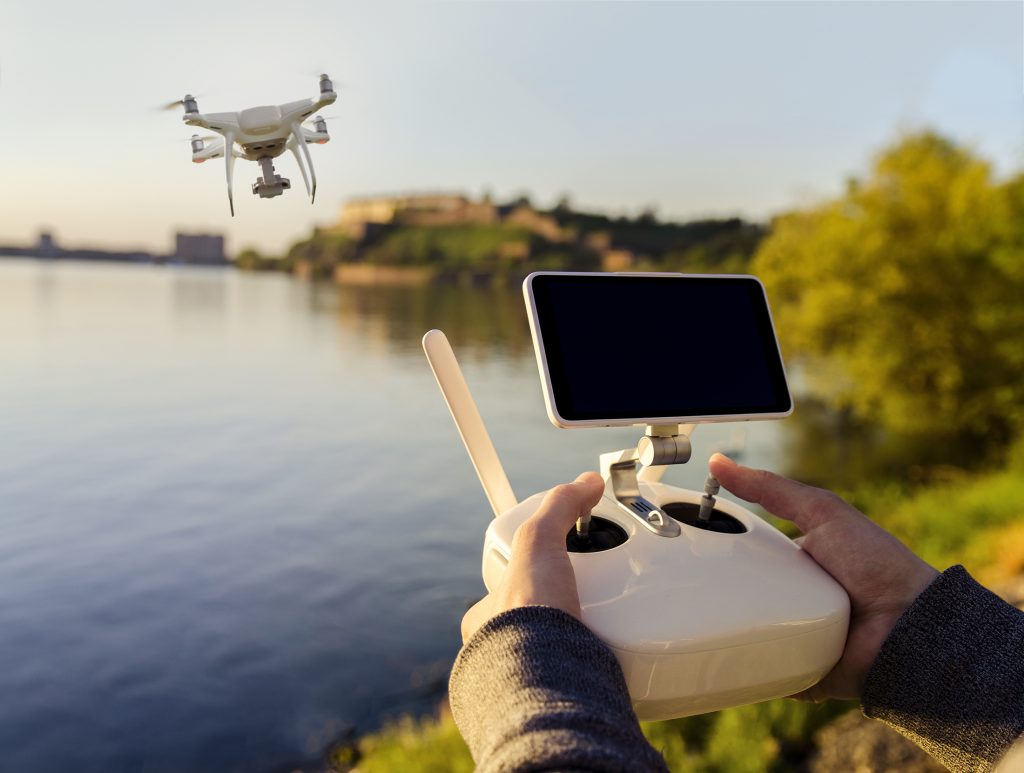
Of course, it’s equally easy to imagine just how dangerous BVLOS operations can be. The very essence of VLOS is that the RPIC is always in control of the drone and can make spur-of-the-moment decisions when needed. There is also a level of environmental awareness that is only possible when the RPIC can scan the surroundings of the drone visually.
There is certainly a delicate balance that needs to be attained for BVLOS drone operations to become a reality. Although there are great benefits, they don’t quite outweigh the potential hazards. This means that there must be stricter safety measures in place compared to operations within VLOS. This can be achieved through revised practices as well as technological enhancements.
Applying for a BVLOS waiver
The regulations for flight within VLOS are described in Part 107.31 and Part 107.33. These rules apply to commercial drone operators. There is an equivalent provision for recreational drone pilots under Section 44809.
Commercial drone pilots have an option to apply for a waiver for Part 107.31. Such waiver applications need to be filed and are assessed on a case-to-case basis by the FAA.
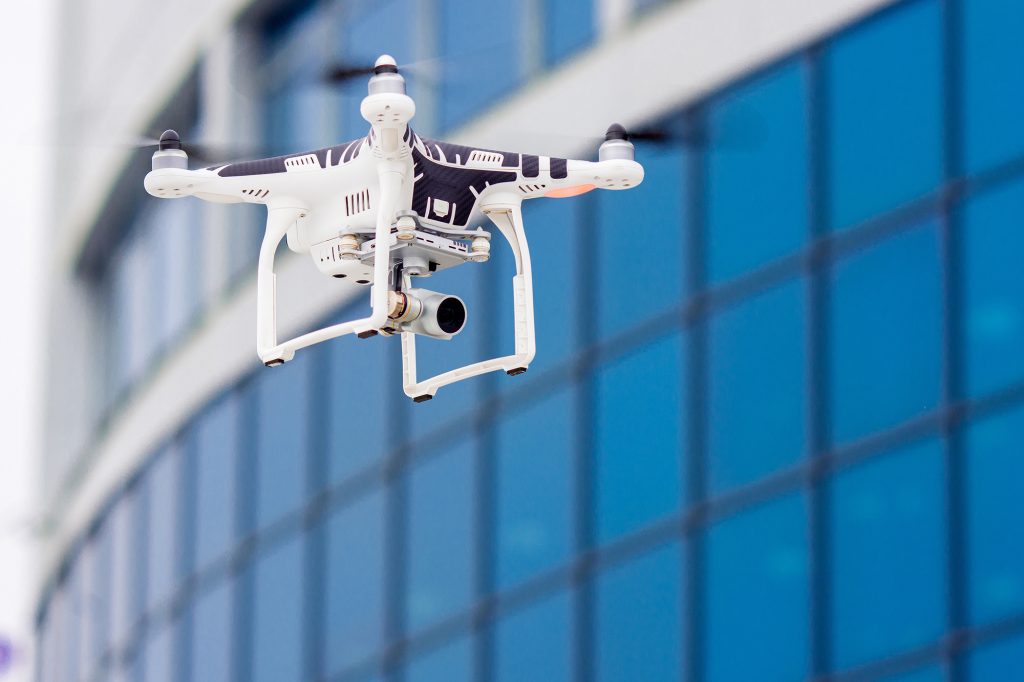
Public safety agencies that are flying under an FAA COA have an option to apply for a special “First Responder Tactical Beyond Visual Line of Sight” or TBVLOS waiver. This is exclusively granted for cases that require BVLOS operations for “extreme emergencies to safeguard human life”.
Those with a Part 107 license and are involved in emergency response can apply for a “Special Government Interest” waiver instead. This allows drone flight in areas in areas that would have otherwise been restricted. This is an expedited version of the usual waiver application process for time-critical waiver requests.
Part 107 drone pilots that are not involved in emergency response can still request a waiver under the normal procedure. This can take up to 60 days of lead time and will require comprehensive documentation. The FAA provides guide questions that drone pilots can answer as part of the waiver request. These guide questions will address specific points such as:
- How the RPIC will determine the location and attitude of the drone outside of VTOL limits
- How the RPIC will remain visible within or beyond 3 statute miles from the RPIC
- How the RPIC will identify any obstacles or hazards while flying the drone
- How the RPIC will be alerted should drone function become degraded
- The emergency response procedure if something goes wrong during the operation
- How the team will ensure that the drone and controller will retain good communication or transmission
There is not a “one size fits all” approach to flying BVLOS. Different circumstances may require different extra safety measures. The FAA assesses each waiver application according to how well the drone pilots understand the situation and anticipate potential hazards.
However, BVLOS waivers are among the rarest to be granted. According to statistics, 99% of BVLOS waiver requests have not been approved.
Technologies that can facilitate BVLOS operations
In the past few years, new technologies have developed for drones with the primary objective of making drone flight safer. Some of these can even help make BVLOS operations more accessible. Here are just some of the trends that we are looking forward to:
Remote ID
The Remote ID proposed by the FAA is the first step towards the next step of the evolution of drone operations – truly automated drone flight. This implies the operation of a drone without the explicit supervision of a drone operator. This necessarily will include BVLOS conditions.
The goal of Remote ID is to ensure accountability and traceability of drones. This will hopefully deter or eliminate the use of drones for malicious reasons such as voyeurism or the smuggling of illegal goods.
With Remote ID, every drone will be required to broadcast a packet of ID information regularly. This can be accessed by receivers on the ground who will then see the unique serial ID of the drone. This can then be traced to the person who owns said drone.
Drone manufacturers will be required to comply with Remote ID requirements by September 2022. By September 2023, all drone pilots are expected to be using drones with Remote ID capabilities.
Sense-and-avoid sensors
Sense-and-avoid sensors are nothing new. Even several years ago, drones have already been outfitted with infrared or vision sensors that allow them to detect obstacles and avoid them automatically. However, this technology has gotten so much better recently.
More modern drones now employ the same technology used in 3D modeling for sense-and-avoid systems. Using an array of cameras, these drones create a 3D model of their immediate environment. This helps them not only to avoid obstacles but also to map out an optimal flight path that will keep them safe.
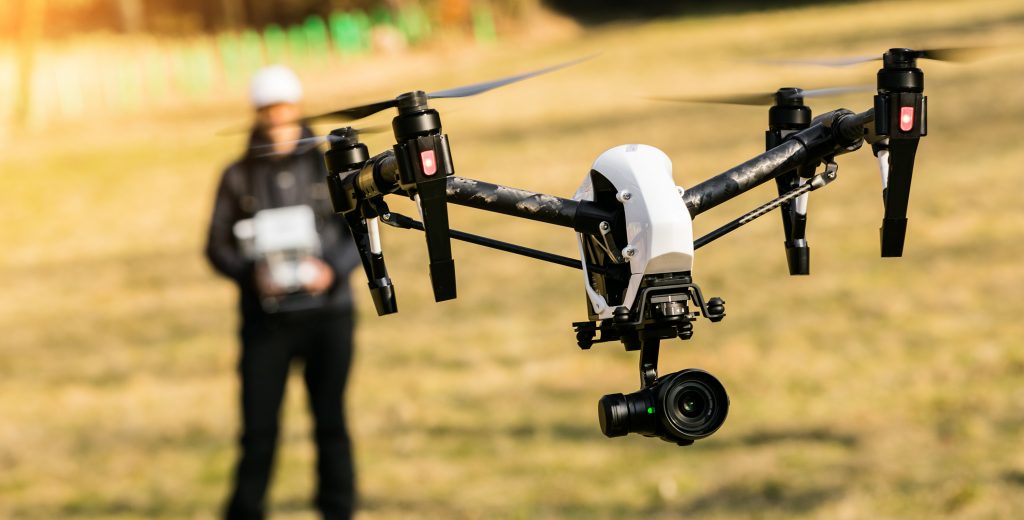
Advanced sense-and-avoid sensors will come in handy when BVLOS operations become more common. When flying BVLOS, drone pilots only have a very limited perception of the drone’s surroundings. An omnidirectional obstacle avoidance system will greatly augment environmental awareness, even if it’s not consciously being done by the drone pilot.
Right now, we can already see that sense-and-avoid systems have become an area for competition between different drone brands. This competition has also fueled a rapid rate of innovation. This is a very good development for the drone industry.
ADS-B receivers
When flying BVLOS, the drone pilot also needs to be aware of the presence of manned aircraft. Under any circumstance, drones are expected to yield the right of way when a manned aircraft is nearby. Normally, drone pilots can use their senses to detect the presence of manned aircraft and react accordingly. This may not be the case for BVLOS.
Although still uncommon, some drones have been outfitted with ADS-B receivers. This allows drone pilots to detect the ADS-B signals being transmitted by manned aircraft before they pass by. The implementation of ADS-B in drones also informs pilots about the relative proximity of aircraft – they at least have an idea of whether the aircraft is more than 10 miles or less than 5 miles away.
More important than any fancy sensor or transmitter, a drone pilot needs to do intense preparation before flying BVLOS. Those applying for BVLOS waivers are advised to do a pre-flight survey of the operations area. This allows the drone pilot to orient themselves about any potential hazards.
The actual operations area must also be limited and well-defined. This gives a sense of control to the flight crew. It’s best to do a BVLOS flight in an area that is not crowded and does not have any critical infrastructure.
Final thoughts
For a long time, BVLOS operations have been something that drone pilots have aspired for. However, the loss of environmental awareness is simply too dangerous. The fact that the FAA has rejected so many BVLOS waivers can attest to that.
However, things seem to be looking up for this frontier of drone flight. With Remote ID soon to be implemented, the foundations for BVLOS flight are already being built. Although we’re expecting to see the FAA start loosening up the restrictions on BVLOS over the next couple of years, it’s going to take a massive paradigm shift before BVLOS operations become safe for everybody.
